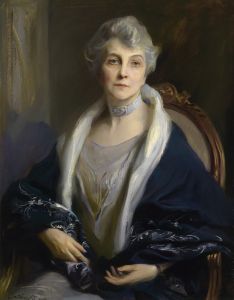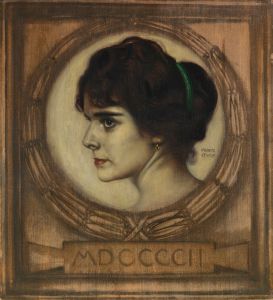
Portrait Of Mme Weissgerber De Stragewicz, Later Mme R. Berenger
A hand-painted replica of Albert Edelfelt’s masterpiece Portrait Of Mme Weissgerber De Stragewicz, Later Mme R. Berenger, meticulously crafted by professional artists to capture the true essence of the original. Each piece is created with museum-quality canvas and rare mineral pigments, carefully painted by experienced artists with delicate brushstrokes and rich, layered colors to perfectly recreate the texture of the original artwork. Unlike machine-printed reproductions, this hand-painted version brings the painting to life, infused with the artist’s emotions and skill in every stroke. Whether for personal collection or home decoration, it instantly elevates the artistic atmosphere of any space.
Albert Edelfelt was a renowned Finnish painter known for his realistic and detailed portraits. One of his works, "Portrait of Mme Weissgerber de Stragewicz, Later Mme R. Berenger," exemplifies his skill in capturing the essence and character of his subjects. Edelfelt, who lived from 1854 to 1905, was a pivotal figure in Finnish art and played a significant role in bringing Finnish art to international attention during the late 19th and early 20th centuries.
The painting in question is a portrait of a woman identified as Mme Weissgerber de Stragewicz, who later became known as Mme R. Berenger. Unfortunately, specific details about the sitter's life and her connection to Edelfelt are not well-documented in public records. However, Edelfelt's portraits were often commissioned by individuals of notable social standing, suggesting that Mme Weissgerber de Stragewicz may have been a person of some prominence or influence during her time.
Edelfelt's technique in portraiture was characterized by his ability to render his subjects with a sense of realism and vitality. He was adept at using light and shadow to create depth and dimension, which brought a lifelike quality to his paintings. His attention to detail extended to the clothing and surroundings of his subjects, often reflecting the fashion and interior styles of the period.
The portrait of Mme Weissgerber de Stragewicz likely reflects Edelfelt's typical style, with a focus on the sitter's expression and demeanor. His portraits often conveyed a sense of intimacy and personal connection, capturing not just the physical likeness but also the personality and mood of the individual. This ability to convey character and emotion is one of the reasons Edelfelt's portraits remain highly regarded.
Edelfelt's work was influenced by his studies in Paris, where he was exposed to the techniques of the French academic tradition. He studied at the École des Beaux-Arts and was influenced by contemporary artists such as Jean-Léon Gérôme and Jules Bastien-Lepage. This exposure helped him develop a style that combined academic precision with a more modern, impressionistic approach to light and color.
Throughout his career, Edelfelt received numerous accolades and was a member of several prestigious art institutions. His work was exhibited widely, and he gained international recognition, which helped elevate the status of Finnish art on the global stage. His portraits, including that of Mme Weissgerber de Stragewicz, are considered important cultural artifacts that provide insight into the people and society of his time.
In summary, while specific details about the portrait of Mme Weissgerber de Stragewicz are limited, the work is a testament to Albert Edelfelt's skill as a portrait artist. His ability to capture the essence of his subjects with realism and sensitivity has left a lasting legacy in the world of art.

















